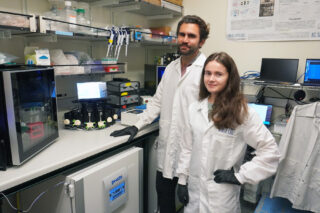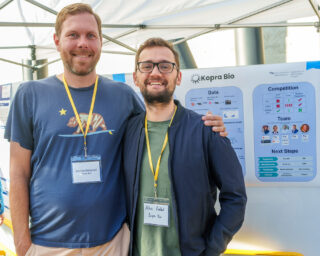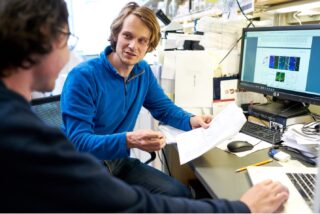QBI Coronavirus Research Group at UCSF Awarded $67.5 Million To Develop New Antiviral Therapies
From the story by Laura Kurtzman at UCSF News.
Scientists at the UC San Francisco (UCSF) Quantitative Biosciences Institute (QBI) and the QBI Coronavirus Research Group (QCRG) have been awarded an initial $67.5 million from the National Institute of Allergy and Infectious Diseases (NIAID) to support its mission of pandemic preparedness.
The award, the largest in UCSF’s history, establishes one of nine Antiviral Drug Discovery (AViDD) Centers for Pathogens of Pandemic Concern across the country. These will be collaborative, multidisciplinary academic-industry research centers to develop candidate antivirals for COVID-19 and other viruses with pandemic potential.
The three-year grant will fund early-stage research to identify and validate new viral targets, with an eye to developing small molecules and biotherapeutics that directly block viral targets for SARS-CoV-2, other coronaviruses and other viral families. The most promising drug candidates will then enter late-stage preclinical development. Two additional years of support are anticipated, dependent on expected appropriations and other factors.
“This award brings together an important collaboration among researchers at UCSF and scientific partners across the globe to help accelerate our response to current and future global health crises,” said UCSF Chancellor Sam Hawgood, MBBS. “It is a tremendous validation of QBI’s leadership in this research to date and of the many outstanding scientists involved in this initiative.”
COLLABORATING TO ADDRESS FUTURE PANDEMICS
Led by QBI Director Nevan Krogan, PhD, the QCRG is composed of 43 investigators from 14 institutions in the United States and around the world, including more than two dozen scientists from the UCSF schools of Pharmacy and Medicine, with a rich history of collaboration.
In 2020, as the pandemic spread, Krogan joined forces with scientists from UCSF, Gladstone Institutes, Howard Hughes Medical Institute, Icahn School of Medicine at Mount Sinai, and Institut Pasteur to apply their expertise to help find a treatment. Together, they formed the QCRG and were the first to extensively map the protein-protein interaction landscape of SARS-CoV-2.
INNOVATIVE MODEL FOR RAPID THERAPEUTIC DEVELOPMENT
The QCRG Drug Discovery Platform is an integrated suite of experimental and computational technologies that includes biochemistry, screening, structural biology, proteomics, medicinal chemistry, virology, and integrative modeling. It is focused on finding ways of stopping viruses from hijacking the cell’s protein-making machinery to make copies of itself.
“We are deeply honored to receive this important grant that will allow us to continue and accelerate our pioneering efforts toward identifying direct-acting antivirals for multiple viral targets,” said Krogan, who is also a senior scientist at Gladstone Institutes.
“The model we’ve formed at QCRG has the potential to revolutionize and streamline traditional methods of identifying promising therapies by drawing from expertise within organizations, but most importantly across many organizations, to get the best and brightest minds involved,” he said. “On behalf of all of the researchers and scientists comprising QCRG, we applaud the NIH for their vision of pandemic preparedness and supporting measures to preemptively address future outbreaks.”
Along with evaluating drugs that directly interrupt the viral life cycle, QBI will also target viral enzymes and proteins that are involved in viral modulation of the immune system. QCRG’s AVIDD program will focus on targets against SARS-CoV-2, as well as other viruses in eight viral families. These include paramyxoviruses (which cause measles, mumps and respiratory infections), bunyaviruses (viral hemorrhagic fevers), togaviruses (rubella, equine encephalitis), filoviruses (including Ebola viruses and Marburg virus), picornaviruses (including polio, enteroviruses and other cold-causing viruses), and flaviviruses (including the viruses that cause yellow fever, dengue and Zika).











